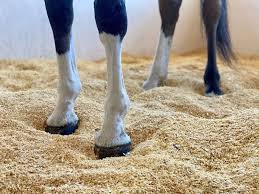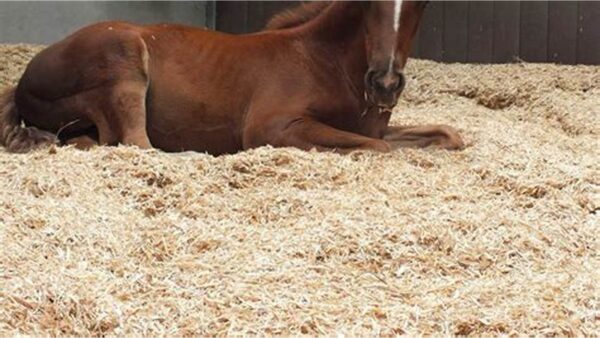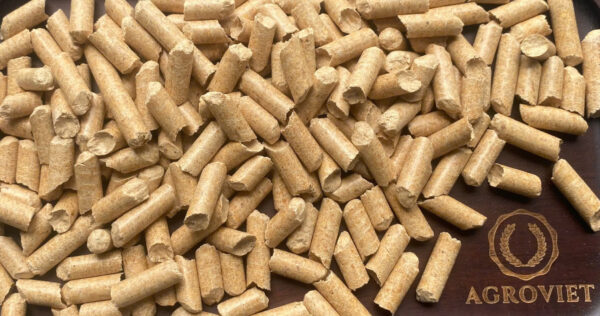Ammonia Exposure in Stables: How Poor Bedding Affects Your Horse’s Lungs and Immune System
Introduction to Ammonia in Horse Stables
Ammonia exposure in horse stables is a significant threat to equine respiratory health and immune function. Poor bedding choices, such as wet straw or low-quality shavings, exacerbate ammonia buildup, leading to conditions like recurrent airway obstruction (RAO) and immune suppression. Wood pellets, with their exceptional absorbency and low-dust properties, offer a powerful solution to control ammonia and protect horse health. Drawing on insights from Trainer Magazine’s article on stable environment optimization, this post explores the dangers of ammonia and why wood pellets are critical for maintaining a healthy stable.
Watch this: https://www.youtube.com/watch?v=gHiof8jhHZw
The Dangers of Ammonia Exposure
Ammonia, a gas produced from the bacterial breakdown of urine in manure, accumulates in poorly managed stables. High ammonia levels irritate the respiratory tract, causing inflammation and increasing the risk of diseases like RAO and exercise-induced pulmonary hemorrhage (EIPH). These conditions can reduce performance by up to 15% in racehorses and lead to chronic respiratory issues. Ammonia exposure also suppresses the immune system, making horses more susceptible to secondary infections, with morbidity rates rising by 10-20% in affected yards, as noted in veterinary research.
How Poor Bedding Contributes to Ammonia Buildup
Poor bedding, such as straw or fine sawdust, retains moisture and fosters bacterial growth, accelerating ammonia production. Wet bedding creates anaerobic conditions where bacteria like Fusobacterium necrophorum thrive, converting urine into ammonia gas. Trainer Magazine highlights that stables with inadequate bedding and ventilation can have ammonia exposure levels near the floor remain elevated even with regular cleaning. This persistent exposure irritates horses’ lungs, leading to coughing, nasal discharge, and reduced stamina, particularly in horses stabled up to 23 hours daily.
Impact on Respiratory Health
Ammonia exposure directly affects the equine respiratory system, which is designed to handle large air volumes during exercise. Inhaling ammonia irritates the mucous membranes, causing inflammation and reducing airway clearance. This increases the risk of RAO, characterized by chronic coughing and labored breathing, and EIPH, which impairs performance in racehorses. The Irish Equine Centre reports that stables with low air changes per hour (ACH)—as low as 1 ACH compared to the recommended 6 ACH—see higher incidences of respiratory issues due to ammonia and dust buildup.
Immune System Suppression
Chronic ammonia exposure weakens the horse’s immune system by elevating cortisol levels, reducing white blood cell production, and impairing antibody responses. This immunosuppression makes horses more vulnerable to bacterial and viral infections, such as equine influenza, with recurrence rates up to 25% higher in poorly managed stables. Trainer Magazine notes that yards with high ammonia levels struggle with consistent performance due to recurring secondary infections, underscoring the need for effective bedding solutions like wood pellets.
Why Wood Pellets Are Essential for Ammonia Control
Wood pellets, made from compressed, heat-treated sawdust, are highly effective at controlling ammonia exposure in stables. They absorb over five times their weight in moisture, keeping bedding dry and inhibiting the bacterial activity that produces ammonia. The heat treatment process eliminates pathogens and mold spores, ensuring a hygienic environment. Unlike straw, which retains moisture, or shavings, which can generate dust, wood pellets break down into a soft, low-dust bedding layer, reducing respiratory irritation and maintaining air quality.
Scientific Evidence Supporting Wood Pellets
Research cited in Trainer Magazine and studies by equine scientist Dr. David Marlin confirm that pellet-type bedding, including wood pellets, outperforms other materials in absorbency and ammonia control. Wood pellets reduce ammonia exposure levels by up to 30% compared to straw, creating a healthier stable environment. Their low-dust nature minimizes airborne pathogens, reducing the risk of RAO and EIPH. The study also found that wood pellets require less frequent replacement, making them cost-effective despite a higher initial cost.
Key Benefits of Wood Pellets for Stable Bedding
-
Superior Absorbency: Absorbs over five times its weight in moisture, keeping stalls dry and reducing ammonia production.
-
Low Dust: Minimizes airborne particles, protecting respiratory health and reducing irritation.
-
Pathogen Control: Heat-treated to eliminate bacteria and mold, creating a hygienic bedding surface.
-
Cost-Effective: Requires less frequent replacement, lowering long-term stable maintenance costs.
-
Comfort: Provides a soft, cushioned surface, supporting horse welfare and reducing stress.
Consequences of Neglecting Proper Bedding
Using inadequate bedding leads to persistent ammonia buildup, compromising horse health and performance. Respiratory diseases like RAO can reduce a horse’s racing career by months, while immune suppression increases veterinary costs, averaging $200-$500 per infection. Poor bedding also contributes to mold and bacterial growth, exacerbating conditions like thrush and skin infections. The economic impact includes reduced performance and higher maintenance costs, with poorly managed stables seeing up to 20% lower productivity.
Practical Tips for Using Wood Pellets
To maximize the benefits of wood pellets, horse owners should:
-
Use high-quality, untreated wood pellets from reputable suppliers to ensure purity.
-
Spread pellets evenly, starting with a 1-2 inch layer, and add water to expand into a soft bedding base.
-
Maintain a bedding depth of 4-6 inches after expansion for optimal absorbency and comfort.
-
Clean stalls daily, removing wet spots and adding fresh pellets to maintain dryness.
-
Combine with proper ventilation, aiming for at least 6 ACH, to enhance ammonia control.
Complementary Strategies for Stable Health
In addition to wood pellets, stable management practices can further reduce ammonia exposure:
-
Ventilation: Install ridge or cowl vents above the horse’s head to ensure 6 ACH, removing moist, ammonia-laden air.
-
Flooring: Use impermeable flooring with rubber matting to prevent urine seepage, complementing wood pellets’ absorbency.
-
Cleaning Routine: Muck out stalls daily and use ammonia-neutralizing products to maintain low levels.
-
Turnout: Provide daily outdoor time to reduce stable confinement and exposure to ammonia.
-
Monitoring: Regularly check air quality and bedding condition to prevent pathogen buildup.
Economic and Welfare Impacts
Wood pellets improve horse welfare by reducing respiratory and immune-related issues, ensuring better performance and longevity. Healthy horses maintain higher racing or working potential, saving owners $100-$300 per horse annually in veterinary costs. While wood pellets have a higher upfront cost, their durability and low maintenance reduce long-term expenses. Their biodegradable nature supports sustainable stable management, aligning with environmental standards and consumer expectations for ethical horse care.
Addressing Challenges with Wood Pellets
Wood pellets require proper handling to maximize effectiveness. Initial setup involves wetting pellets to expand them, which may take extra time. Sourcing high-quality pellets is crucial, as low-grade products may contain dust or contaminants. Store pellets in a dry area to prevent mold, and regularly turn bedding to avoid compaction. With proper management, these challenges are minimal compared to the significant benefits wood pellets offer in ammonia exposure control and horse health.
Conclusion
Ammonia exposure from poor bedding poses a serious threat to horses’ lungs and immune systems, leading to respiratory diseases and reduced performance. Wood pellets, with their unmatched absorbency and hygienic properties, are a science-backed solution to control ammonia and maintain a healthy stable environment. Supported by research from Trainer Magazine and equine studies, wood pellets reduce ammonia levels, enhance air quality, and support horse welfare. By prioritizing wood pellets and adopting robust stable management practices, horse owners can protect their animals, boost performance, and achieve sustainable, cost-effective stable operations.
Read more: https://vietnambestwood.com/general/wood-shaving-wood-pellet-pros-cons/
